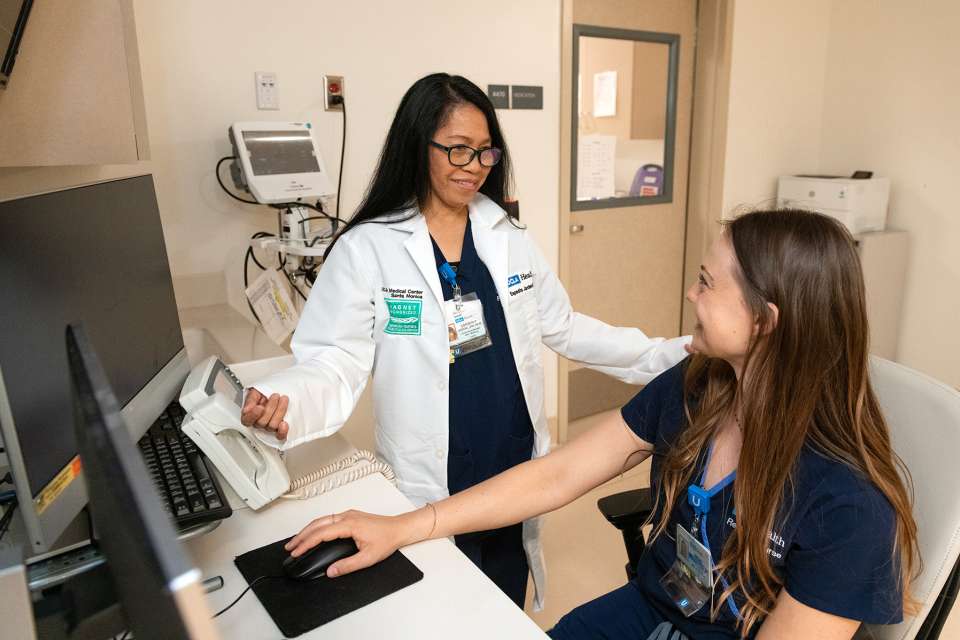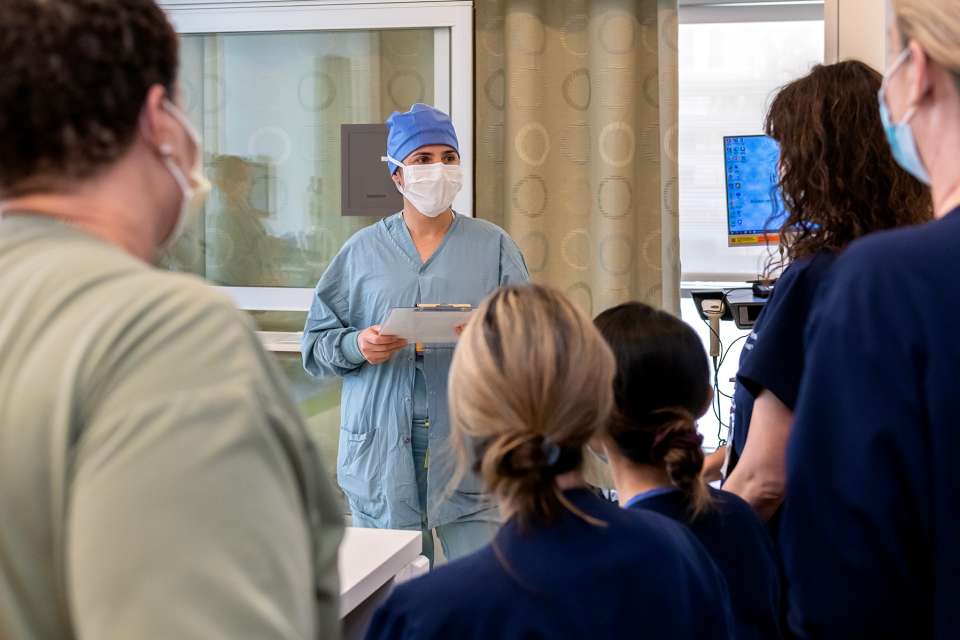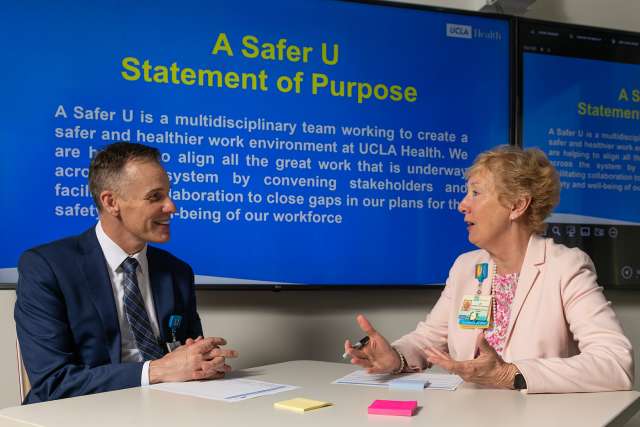As incidences of workplace violence increase and make headlines across the country, UCLA Health leadership is taking action to keep its workforce safe. Building on the work of the prior Disruptive Behavior Taskforce, a new program called A Safer U brings together a multidisciplinary team from across the health system to enhance workplace safety and promote well-being for the workforce.
“We knew we had to look at the role of our culture, our capacity for early recognition and intervention, as well as how we respond to events and learn from them,” says Lee Galuska, PhD, RN, NE-BC, executive director of the Center for Nursing Excellence. “To advance that goal, we brought together team members with expertise in all of those areas.”
Dr. Galuska joined with Patrick Loney, BSN, MBA, RN, chief nursing officer of Resnick Neuropsychiatric Hospital at UCLA, and Norm Lantz, director of UCLA Health General Services, to lead A Safer U. Three groups, with staff and leadership members from throughout the organization, were formed: prevention and proactive culture-building; early recognition and intervention; and current response systems, reporting and data-collection/analysis processes, post-incident staff-support processes and organizational learning.
Here are some highlights:
Group 1: Prevention and Proactive Culture-building
- Evaluated and revised relevant policies and management plans;
- Assessed safety committees and recommended opportunities for alignment;
- Assessed initial and ongoing training related to behavioral and cultural expectations that promote healthy work environments and made recommendations for consolidated training;
- Assessed wellness programs across the organization and made recommendations for alignment and consolidation;
- Identified data to understand baseline performance and measures of success, including incident data and staff-survey data; and
- Working on hardwiring accountability structures and processes to assure they meet cultural standards.

Group 2: Early Recognition and Intervention
- Updated and expanded Crisis Prevention Training (CPI), utilizing data from SOFI (electronic incident reports);
- Increased workplace-violence-prevention training for departments, with the potential addition of simulation similar to an innovative 3NW program at UCLA Santa Monica Medical Center;
- Expanded leadership training for addressing workplace incivility among staff;
- Launched A Safer U toolkit for managing disruptive behavior published on intranet homepage;
- Wearable duress button in high-risk units, currently undergoing proof-of-concept validation; and
- Finalizing a staff safety alert in the electronic health record for patients with a history of violent behavior.

Group 3: Response and Follow-up Processes
- SOFI campaign to streamline/consolidate data on incidents and near misses to provide more accurate data;
- Established new process for closing the feedback loop on SOFI reports; and
- Developing a peer-to-peer support program to strengthen support for team members who have experienced an event.
- “Safer U will continue to evolve over time,” Loney says. “I’m proud of the things we’ve already started and that we’re able to deliver tangible improvements to safety, and that we’re delivering useful processes that will help keep people safe.”
Mobile duress button
One tool in particular that Loney is excited about is the mobile duress button — also known as a panic button. When activated, the wearable electronic device instantly alerts hospital security staff to the user’s name and precise location where the emergency or threat is occurring.
The project is led by Vernon Goodwin, UCLA Health director of security, in collaboration with nursing; it is being piloted at Resnick Neuropsychiatric Hospital at UCLA and other high-risk areas. Early results have been positive.
“The mobile duress button is part of creating emotional and psychological safety,” Dr. Galuska says. “Knowing you have something on your person to call for help is reassuring and sends a message to staff that we care about them and want to take necessary measures to keep them safe.”
The device will be rolled out in phases throughout the year.
Jennifer Karmarkar is the author of this article.
